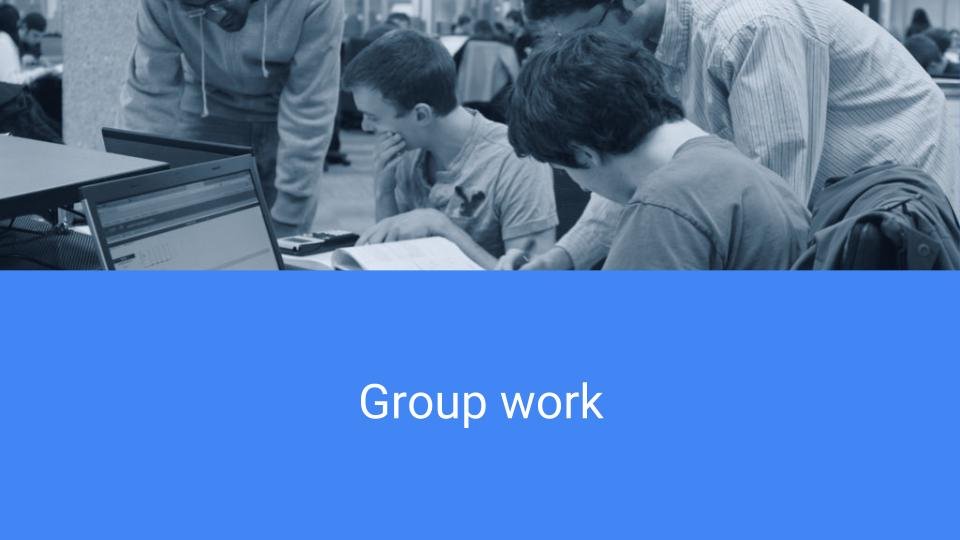
Group work can be a great way to engage a class. With groups, different levels of students with different backgrounds can be matched together which enables the students to learn from each other. There are several guidelines to follow when crafting group assignments. The first guideline is keeping the groups to a reasonable size. Four to five people are a good group size that encourages involvement from each student. When the groups get larger, it can be harder for all of the students in the group to participate. With more than five members, some students are likely to be inactive unless there are distinct roles assigned (Felder and Brent, 2009).
Dividing Groups
There are multiple ways to divide the class into groups. Allowing the class to select a group is not usually ideal. When the students create a group on their own, they are going to look for people that they know. You will instantly see a few single people and a few clusters of students that have self-selected teams. I think it is more ideal for the instructor to divide the class. Counting off teams works well. You determine how many teams you need. Then start with one student and work your way around the room assigning the students to teams. (The first student would be in group 1, second in 2…). You could use the roster at the same interval, but if students are missing the teams can end up uneven. In the classroom, students that are friends often sit next to each other. You also might find students clustered by other variables such as major or by demographic characteristics. By using a counting method in class you can break up those clusters. Counting keeps the assignment random and away from students accusing that you were biased in your team assignments. This process generally leads to a diverse group of team members and ideas.
Define Roles and Expectations
The group should also have clear roles. Some typical roles include the leader or coordinator whose job it is to keep the group on target and to set meetings, the reporter or recorder who prepares the final product, checker who double-checks the solution before submission, and the monitor who makes sure that everyone understands the solution. With clear roles, everyone knows what to do and it will be easier to evaluate individual student effort. The groups should set group norms, rules, and expectations. The instructor can facilitate the group establishment through providing group expectations and roles with descriptions or by letting the groups establish those.
The team expectations and guidelines should be well developed so that the teams know what is going to be evaluated. The teams should establish those guidelines and submit a written document of what the team agrees and each student’s role. The instructor can then use the document to grade based on the parts that were required of the individual team members.
Evaluating group work can occur in multiple ways. You can assign a group score to the overall project. The group can evaluate their performance and the performance of each team member. You can also evaluate each student based on the defined roles. Most of the time you might use a little of each type to evaluate groups.
What happens when groups fall apart? Sometimes a member will be absent the presentation day or if the project is over multiple weeks, you might have complaints about how a student has not completed their part. This is where the group expectations document is helpful. You or the students can outline what will happen if a member does not carry out their role. The expectations should be outlined prior to beginning the group work. As a department chair, when students complain about group work, I send them back to the instructor. When they are at a real job, the students will not be able to control who they work with. The classroom is a good way to learn that before the students enter the workforce.
Group collaboration and student study groups can be facilitated via social media. It can be easier to coordinate collaborative work and group communication (Odom et al, 2013). Social media allows users to communicate without geographic, cultural, and academic barriers that could hamper traditional relationships (Benson and Morgan, 2013). Students who need additional help can ask questions and collaborate using social media (Odom, Jarvis, Sandlin, and Peek, 2013). Social media allows participants to become active learners, collaborators, and contributors to their learning (Benson and Morgan, 2013). Social media allow for the exploration of topics outside the scope of a textbook. Current events or industry news can quickly be added to the curriculum by posting links on social media.
